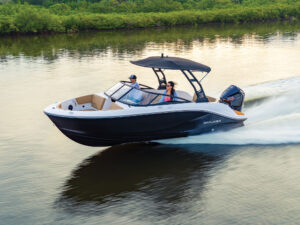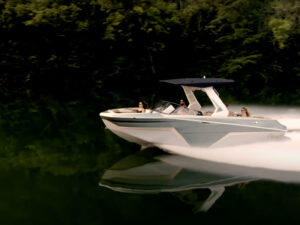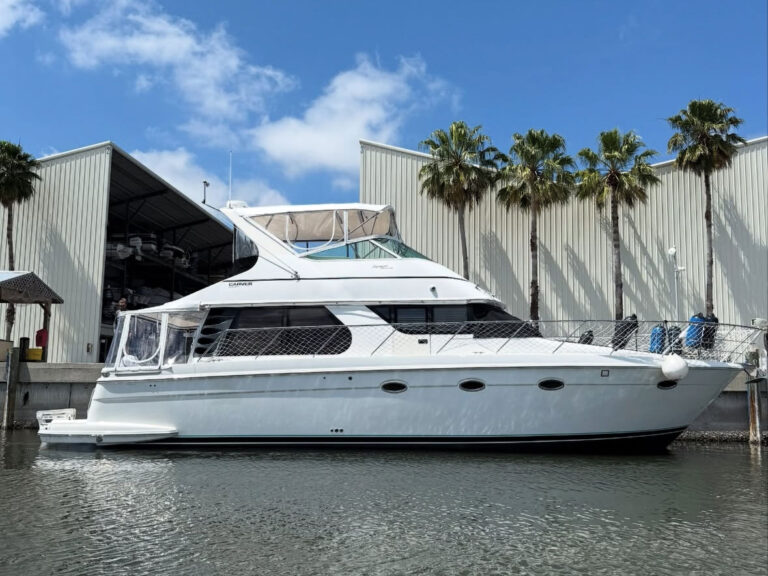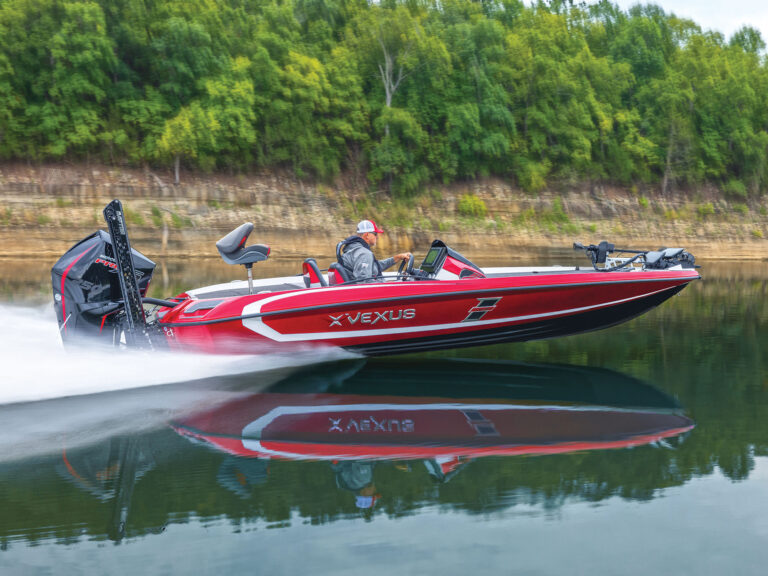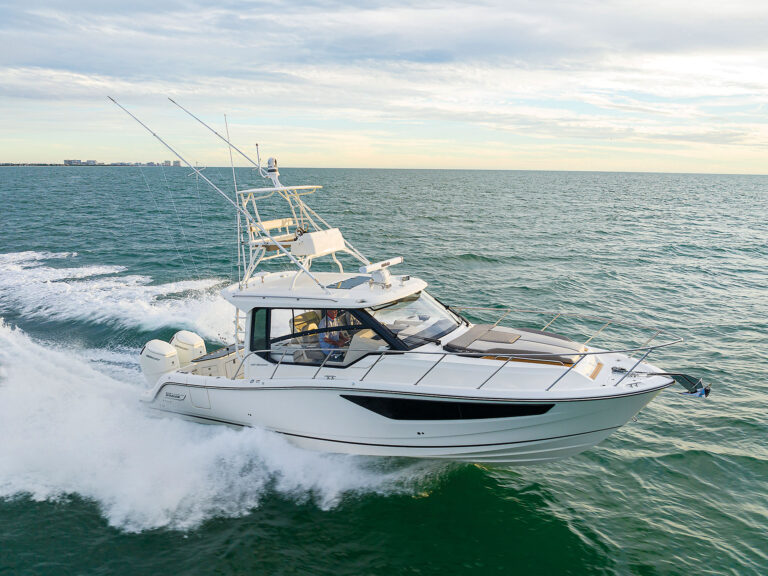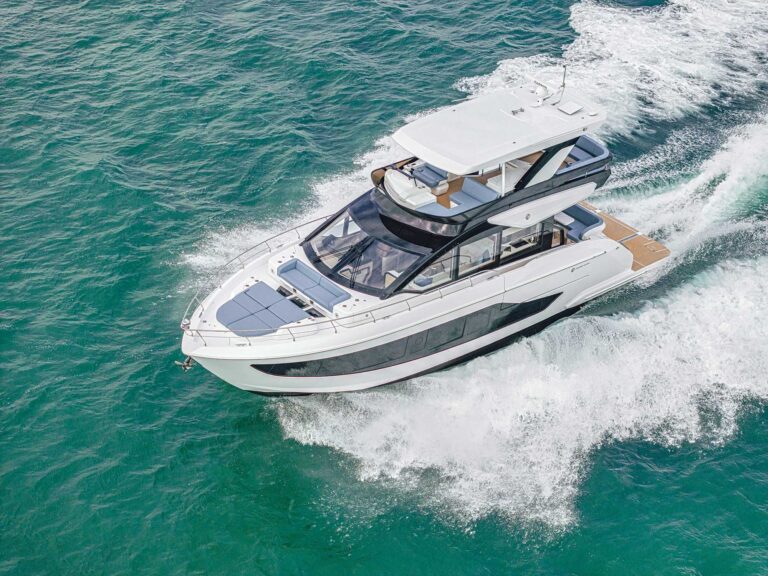
Brunswick siblings Mercury Marine and Navico Group have teamed up to create the next version of the Fathom e-power system supercharged by a new outboard motor alternator. Fathom—a lithium-ion auxiliary power system designed to replace a generator—debuted at the 2020 Consumer Electronics Show installed in a Sea Ray SLX 400 Outboard. It’s been offered as an accessory for the past year. At the recent introduction of the Mercury V-10 Verado 350 and 400 hp outboards, a new Fathom component was revealed: a dual-mode 48-volt/12-volt alternator, capable of delivering up to 6.5kW of power (per engine) in 48V mode. The dual-mode alternator will be a component on the Mercury V-10 350 and 400 hp and V-12 600 hp Verado outboards only when those motors are rigged to a boat with the Fathom e-power system. Beginning in 2023, Brunswick will make the Fathom e-power system available to boatbuilders that are not part of the Brunswick Boat Group. Because of the complexity of integrating the entire Fathom system with the boat’s electrical system, we don’t expect builders, including Sea Ray, to offer Fathom with the 48-volt alternator before the 2024 boat season. Boatbuilders will determine retail pricing. Sea Ray is currently pricing Fathom with 12-volt engine charging at $26,400. There is no credit for the value of a deleted 7.5 kW genset.

The ability to charge the Fathom e-power battery bank from shore power or the outboard charging system is a great feature, but the charge rate with a 12-volt alternator, even with three motors on the transom, is so slow as to not be very practical; Navico estimates 10 hours of required run time to reach full charge from 20 percent charge. With the 48-volt alternator, the battery bank could, in theory, charge in a quarter of that time if no accessories are in use. But even if the AC and other power-hungry gadgets are running, the 48-volt alternator can quickly add significant charge.
To take full advantage of this newfound charging power, Navico Group has made some design changes to the Fathom system. When the boat is running at speed, the house batteries can be bypassed and the alternator will power accessories through a converter or directly power 48-volt appliances and accessories, thus preserving energy stored in the batteries. The Fathom 2.0 system will also seamlessly maintain charge in the house batteries, which in turn charge the engine-cranking batteries.
Read Next: Navico Fathom e-Power

The most interesting new element of the Fathom system is called Power+ mode. If the boat is at rest away from shore power and the house batteries reach a low-charge threshold, the Fathom system will send an alert on the boat’s multifunction display or through the Fathom app. The skipper may then choose to engage Power+ mode through the MFD touchscreen. In this mode, an outboard with the 48-volt alternator is started under the control of the Fathom system and throttled up to no more than 2,500 rpm to charge the house batteries. A number of safety protocols are automatically engaged in Power+ mode: Shifting and steering are electronically locked out. If CO2 is detected in a cabin, the motor is shut down; the cowl must be in place on the motor; and exhaust temperature and water pressure are monitored to ensure that the boat is in the water. The motor has a separate internal hour meter for Power+ mode, and time recorded at this low rpm is not counted on the motor’s total runtime; Mercury says that wear on the engine is negligible at this low rpm. Anglers should note that to generate a 48-volt charge, the outboard needs to reach at least 1,300 rpm. At lower rpm, the system will be charging the house bank at 12 volts rather than 48 volts, perhaps not enough to keep up with load if AC, a gyro stabilizer and other accessories are running during long periods of trolling. In this situation, you’d need to suspend trolling and engage the Power+ mode, run at speed to charge the house batteries, or shut down some accessories.
The Fathom e-power system is an example of the vertical integration Brunswick hopes to leverage as it implements its Autonomy, Connectivity, Electrification and Shared Access (ACES) strategy. Fathom integrates components from Mercury and Navico Group brands, including Mastervolt, BEP, CZone, Ancor and Blue Sea Systems. Each Fathom system is scaled to the power demands of an individual boat and anticipated use patterns. For more information, visit fathomepower.com.



